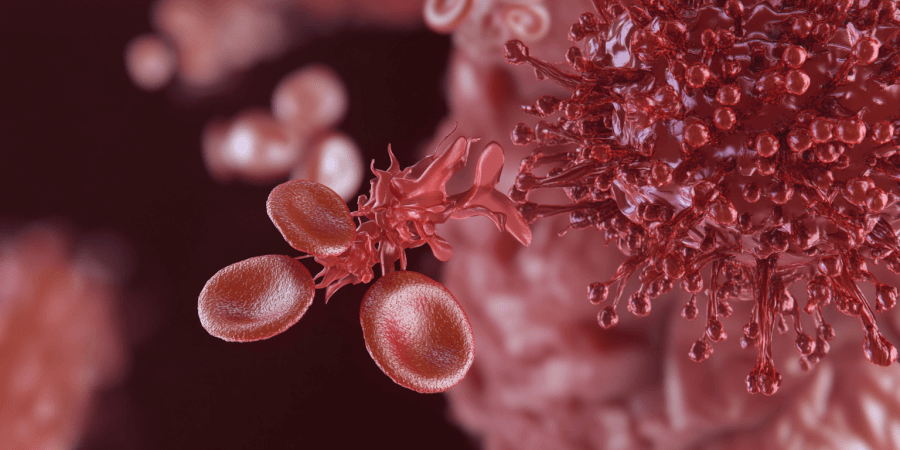Postoperative care is a crucial component of nursing, especially in the first 24 to 48 hours following surgery. During this window, patients are at the highest risk for complications, some of which can be life-threatening if not addressed immediately. For nursing students preparing for the NCLEX, understanding the signs, priorities, and interventions for these emergencies is essential.
This guide covers the most critical postoperative emergencies that nurses may encounter, including evisceration, dehiscence, hemorrhage, pulmonary embolism, aspiration, and infection.
🎯 Free NCLEX quiz on this topic!
Test your knowledge after you finish reading.
1. Evisceration
Evisceration is the protrusion of internal organs through a surgical wound and is considered a medical emergency.
Signs:
- Visible bowel or tissue at incision site
- Sudden pain or pulling sensation
- Shock symptoms in severe cases
Nursing Actions:
- Cover the organs with sterile saline-soaked gauze
- Instruct patient to bend knees and stay still
- Notify surgical team immediately
Use the mnemonic E.V.I.S.C.E.R.A.T.E. to remember steps:
- Expose only to assess
- View for visible organs
- Instruct to bend knees
- Soak gauze
- Cover site
- Elevate head slightly
- Remain calm
- Avoid pressure
- Team assist
- Evaluate for shock
Read more on NCLEX Post-Operative Care.
2. Dehiscence
Dehiscence is the partial or total separation of wound layers without the protrusion of organs.
Signs:
- Sudden opening of incision
- Increased drainage
- "Popping" sensation reported by the patient
Nursing Actions:
- Position the patient to reduce strain
- Notify the provider
- Prepare for wound closure procedures
Learn more in our article on 25 Essential Words to Know Before the NCLEX.
3. Hemorrhage
Hemorrhage is rapid and excessive bleeding and is one of the most dangerous post-op complications.
Signs:
- Decreased blood pressure
- Increased heart rate
- Pale, clammy skin
- Decreased urine output
Nursing Actions:
- Apply pressure to the bleeding site (if external)
- Elevate legs to promote perfusion
- Administer IV fluids and oxygen
- Prepare for blood transfusion if ordered
Use your ABCs and always assess for circulatory collapse.
Get familiar with interpretation strategies in NCLEX Fundamentals: Pharmacology & Conversions.
4. Pulmonary Embolism (PE)
A pulmonary embolism occurs when a blood clot travels to the lungs, blocking blood flow.
Signs:
- Sudden chest pain
- Dyspnea (shortness of breath)
- Tachycardia
- Hypoxia and restlessness
Nursing Actions:
- Administer oxygen
- Notify provider immediately
- Prepare for anticoagulant administration
- Monitor vital signs closely
Review more life-threatening conditions in our guide on Prioritization and Delegation for NCLEX.
5. Aspiration
Aspiration is the inhalation of gastric contents into the lungs, which may cause pneumonia or airway obstruction.
Signs:
- Coughing, choking, or wheezing during feeding
- Decreased oxygen saturation
- Altered breath sounds
Nursing Actions:
- Position in high Fowler’s or side-lying position
- Suction as needed
- Administer oxygen
- Notify provider for further evaluation
For additional coverage of aspiration and lung safety, see our article on Mastering NCLEX Infection Control Questions.
6. Postoperative Infection
Infections may occur at the surgical site or systemically as sepsis.
Signs:
- Redness, swelling, purulent drainage at the incision
- Fever, chills
- Elevated WBC count
Nursing Actions:
- Monitor incision sites and vital signs
- Administer prescribed antibiotics
- Maintain sterile dressing changes
- Teach proper hygiene and wound care
For NCLEX mnemonics, check Nursing Mnemonics: 25 Concepts.
7. Urinary Retention and Postoperative Ileus (Bonus Additions)
Two frequently overlooked but common post-op complications include urinary retention and postoperative ileus. While not always emergencies, they can escalate quickly and compromise patient safety.
Urinary Retention:
- Inability to void within 6–8 hours post-op
- Bladder distension and discomfort
Nursing Actions:
- Assess bladder with a bladder scanner
- Promote ambulation and privacy
- Consider provider notification for catheterization if retention persists
Postoperative Ileus:
- Absence of bowel sounds
- Abdominal distension, nausea, and vomiting
Nursing Actions:
- Maintain NPO status
- Administer IV fluids as prescribed
- Encourage ambulation as tolerated
Adding these to your NCLEX study list helps cover more subtle but testable complications that require swift nursing assessment and escalation.
AI for Emergency NCLEX Scenarios
AI-powered tutors like GoodNurse can simulate emergency NCLEX scenarios like evisceration, hemorrhage, and PE with instant feedback and rationales. This helps develop clinical judgment faster and allows repeated practice in a stress-free environment.
Explore more at How AI is Transforming Nursing Education.
Sample NCLEX Question
Question: A nurse walks into a patient's room after abdominal surgery and observes a loop of bowel protruding from the surgical incision. What is the nurse’s first priority?
A. Apply firm pressure to the area
B. Elevate the head of the bed
C. Notify the surgeon and cover the bowel with saline-soaked gauze
D. Obtain a surgical tray for wound repair
Answer: C
Rationale: Evisceration requires the nurse to protect the organs and notify the surgeon immediately.
Conclusion
Understanding and responding to postoperative emergencies is a vital NCLEX competency and an essential nursing skill. Whether it's evisceration, hemorrhage, aspiration, or ileus, recognizing early signs and knowing the correct interventions can save lives.
Keep studying these high-yield concepts, apply frameworks like the ABCs and Maslow’s Hierarchy, and continue using tools like GoodNurse to simulate real clinical decisions.
You’ve got this—stay sharp and stay safe.







